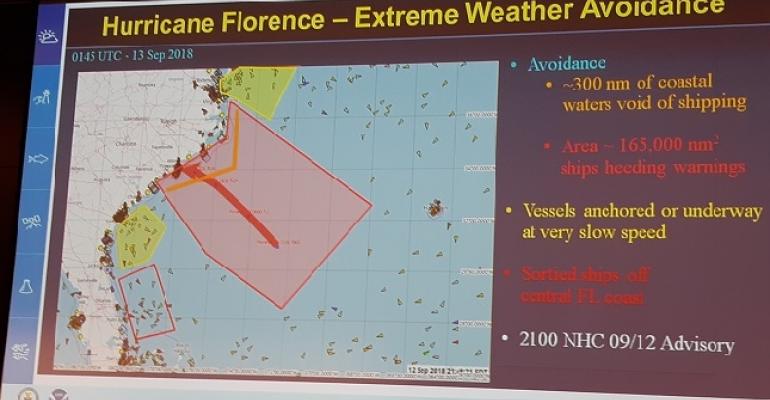The US Custom House in lower Manhattan dating back to the early 1900’s, now a museum and events centre, the venue for a recent American Institute of Marine Underwriters (AIMU) seminar on marine insurance issue, provided an unwitting metaphor for the challenges the sector faces in the 21st century.
Throughout all the presentations, except perhaps for the “Syndicates” discussion, where the Lloyds Lab- an innovation incubator developing applications for data-driven underwriting, was not mentioned, there was an undercurrent of technology being infused into this very old business.
Echoing a theme heard in other maritime contexts, keynote speaker Jim Lynch, from the Insurance Information Institute III), a clearinghouse and advocacy group for the industry, in response to a question on the quality of information on the marine side of the business, said: “Data is hard.”
This theme came through from multiple visages, including in a later presentation, by meteorologist Darin FIgurskey, who heads up operations at the Ocean Prediction Center- in the National Weather Service (NWS), part of the National Oceanic and Atmospheric Administration (NOAA). His office collects weather observations from vessels at sea, which are then input into NWS forecasts.
This is a matter impacting human lives, Figurskey mentioned the El Faro disaster and various permutations of bad data. He noted that the US Coast Guard, in its Maritime Commerce Strategic Outlook, is looking at incorporating weather data into AIS transmissions from vessels.
Read more: Former El Faro crew members say ship suffered structural problems
Traditionally, weather observations are sent manually to the Ocean Prediction Center from vessels at sea. With reduced crew sizes, and turnover of seafarers, getting observations has become more difficult. Figurskey, hoping to liaise more with the maritime industry, likened the AIS meteorological input to “crowd-sourcing”.
A co-panelist, Peter Ulrich, senior vice Ppresident at Risk Management Solutions (RMS) which provides cargo movement and valuation models for cargo insurance underwriters, also noted difficulties with data in the maritime context, citing discontinuities in obtaining reliable supply chain data when vessels are at sea.
Advances in mapping and machine learning are creeping into the maritime insurance business.
Stressing the III’s efforts to visualize risks, feeding the overarching goals of controlling and managing them, Lynch had described the inchoate Global Resilience Project, where extensive geographic information systems (GIS) and mapping are being used to pro-actively manage marine insurance risk, including that from, hurricanes with rain and windstorms.
The offshore wind business presented itself, oddly, in a very unique context, in Lynch’s opening keynote. But offshore wind offers another visage, of the more positive variety, to the insurance industry, that of attracting younger talent to counter the “graying” of the business.
Read more: Wind power and big bucks for Connecticut ports
With the excitement and the positive environmental impacts of generating electricity by harnessing offshore wind, university graduates and young professionals could be attracted to the marine insurance business as the sector grows. In his slides, using data from the US Department of Energy, he suggested that offshore wind capacity in the States would grow from 3.05 gigawatts in 2020, to 21.76 gW in 2030 and mushroom to 85.92 gW by 2050.
Copyright © 2024. All rights reserved. Seatrade, a trading name of Informa Markets (UK) Limited.
Add Seatrade Maritime News to your Google News feed.  |


